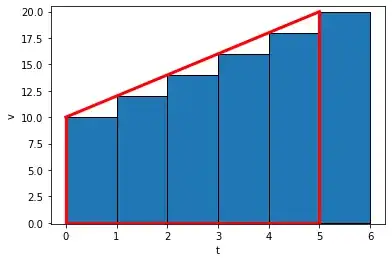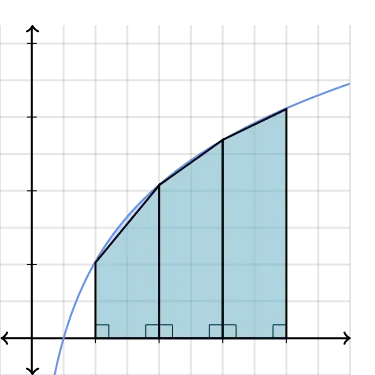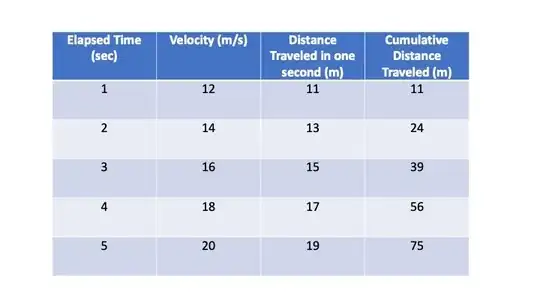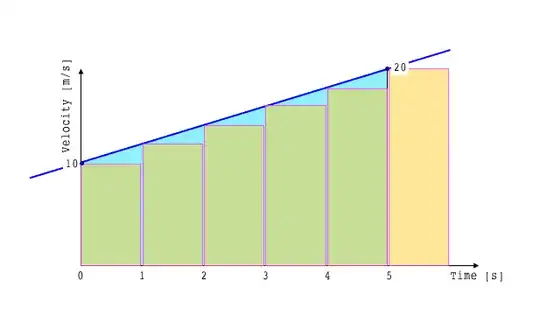You stepped into the magical wonderland of numerical integration. Basically, you want to estimate the area under the line $v=v_0+at$, or the integral of $v$ from 0 to 5. You chose a timestep of $\Delta t=1$ and this is quite large for numerical integration. By choosing a smaller timestep you will get closer to the true answer. Note that if you choose a timestep that is not one, you have to multiply each contribution in the sum by $\Delta t$.
More importantly, with a large timestep getting things exactly right is harder. You made the simple mistake of including the endpoint in the sum. Let's see why that matters. Take a look at the graph below. Here you want to estimate the area under the red line and the area in blue is what you actually calculated. As you can see, the rectangle between $t=5$ and $t=6$ is a gross overestimation of the area, and it should not be included. If we exclude it, we get 70. This is already much closer!

But we can do better. There is a more accurate way of numerical integration, called trapezoidal integration. Instead of summing little rectangles, we sum trapezoids. See the image below. Because we have a straight line, this will give the exact answer (can you reason why?). The area of a trapezoid is given by $\tfrac 1 2(a+b)w$ where $a$ is the left edge, $b$ is the right edge and $w$ is the width. The integration now looks as follows
\begin{align}
\text{area }=&\,\tfrac 1 2(v_0+v_1)\Delta t+\tfrac 1 2(v_1+v_2)\Delta t+\tfrac 1 2(v_2+v_3)\Delta t\\
&+\tfrac 1 2(v_3+v_4)\Delta t+\tfrac 1 2(v_4+v_5)\Delta t\\
=&\,\Delta t(\tfrac 1 2 v_0+v_1+v_2+v_3+v_4+\tfrac 1 2 v_5)
\end{align}
Plugging in your values (with $\Delta t=1$) gives
\begin{align}
\tfrac 1 2 \times 10+12+14+16+18+\tfrac 1 2 \times 20=75
\end{align}
So using trapezoidal integration, we arrive at the right answer. But note that this happened because we integrated a straight line. If we integrated a parabola or something more complicated, we would still be off. But by reducing the timestep you can get as close as you want.

Image from Khan academy



